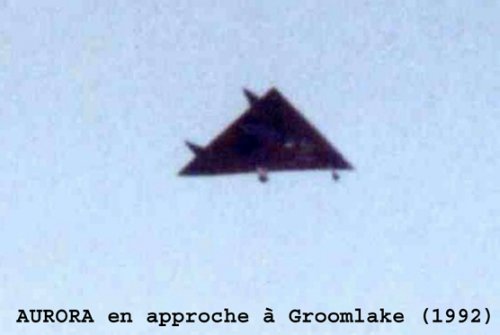Bruce Johnson
ACCESS: Restricted
- Joined
- 13 January 2008
- Messages
- 5
- Reaction score
- 2
Re: Chris Gibson - the man behind North Sea Aurora sighting
Yes, I suspect that the Quartz program was similar to Have Blue in scope and operation. By around 1980, Have Blue was well over, and the F-117A was in full development. Lockheed wanted to stay out front and take stealth technology to the next level. So, they proposed a flying testbed project to demonstrate some kind of newer super-duper stealth technology, and won a contract. It was primarily a Lockheed project, but Boeing may have been a teammate. One or two airframes were quickly designed and built in a shape that was specifically optimized to work with the technology. They weren't engineered out to be prototypes of an operational aircraft. My guess is that they were unmanned, fairly large, approximately Delta shaped, and slow moving. The test program would have involved making occasional passes over known radar ranges and installations. Like most black testbed projects, the majority of the work was done on the ground and actual test flights were expensive and rare. Later in the program, it's likely that they would have taken it over to the UK for a while and flown it near some European and Baltic radar installations, usually in the company of a pair of F-111's. I suspect that the testbed program ended around 1990, and successfully demonstrated the technology. Meanwhile, Lockheed and Boeing had proposed a project to design and build an operational aircraft that would use the technology, and won an initial design contract. But once the costs and operational constraints started emerging, the project got canceled. I think this was also around 1990-1991. The dance of requirements and proposals that eventually became Tier III, etc., came right after that.
Like I said, the timing and description seem to fit right in with the Gibson sighting. And because of the delta shape, it was assumed to be designed to go fast, which fed the whole Aurora story.
Yes, I suspect that the Quartz program was similar to Have Blue in scope and operation. By around 1980, Have Blue was well over, and the F-117A was in full development. Lockheed wanted to stay out front and take stealth technology to the next level. So, they proposed a flying testbed project to demonstrate some kind of newer super-duper stealth technology, and won a contract. It was primarily a Lockheed project, but Boeing may have been a teammate. One or two airframes were quickly designed and built in a shape that was specifically optimized to work with the technology. They weren't engineered out to be prototypes of an operational aircraft. My guess is that they were unmanned, fairly large, approximately Delta shaped, and slow moving. The test program would have involved making occasional passes over known radar ranges and installations. Like most black testbed projects, the majority of the work was done on the ground and actual test flights were expensive and rare. Later in the program, it's likely that they would have taken it over to the UK for a while and flown it near some European and Baltic radar installations, usually in the company of a pair of F-111's. I suspect that the testbed program ended around 1990, and successfully demonstrated the technology. Meanwhile, Lockheed and Boeing had proposed a project to design and build an operational aircraft that would use the technology, and won an initial design contract. But once the costs and operational constraints started emerging, the project got canceled. I think this was also around 1990-1991. The dance of requirements and proposals that eventually became Tier III, etc., came right after that.
Like I said, the timing and description seem to fit right in with the Gibson sighting. And because of the delta shape, it was assumed to be designed to go fast, which fed the whole Aurora story.





